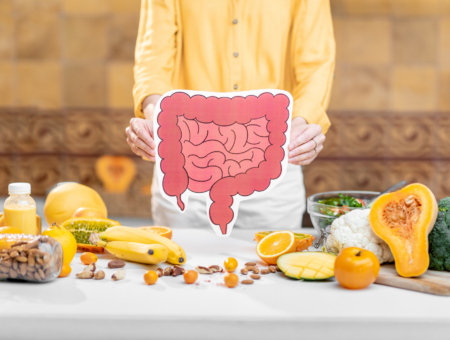
Beginners guide to the elimination phase
Information surrounding the Low FODMAP Diet can be complicated and as a result misconceptions often arise. A common misunderstanding is that once on the diet, all FODMAPs should be avoided long-term, but (as you might be pleased to know), this isn’t true at all!
The Low FODMAP Diet can be split into three phases:
1) the elimination phase
2) the re-challenge/reintroduction phase
3) the maintenance phase
In this article, we’re going to break down the elimination phase, which is the only time where all foods high in FODMAPs should be strictly avoided. Two to six weeks long, the goal of this initial phase is to identify that it is indeed foods high in FODMAPs that are causing your gastrointestinal symptoms. All high FODMAP foods need to be removed from your diet and the focus placed on eating low FODMAP foods instead. Ideally, significantly reducing the amount of FODMAPs you eat should significantly reduce your IBS symptoms. Some people might feel better in the first week, while others can take longer – it’s important to remember that everybody’s different.
It’s recommended that the elimination phase continues only for 2-6 weeks while you gain symptom control. Think about it as if you’re giving your gut a lovely holiday; a break from food that might be irritating it. Once your symptoms are under control you can then start the next phase: reintroduction, with the guidance of your dietitian. It’s really important that some high FODMAP foods are reintroduced back into your diet as they’re super important for long term gut health. As a general rule: the more diverse your diet is, the healthier your gut is likely to be.
Starting the elimination phase can be daunting, but it doesn’t have to be! Here are five tips to help give you a great start on your FODMAP journey:
- Set up a food, mood and symptom journal. This can be a really useful tool to help to identify triggers; whether they might be as a result of a food, mood or both. Symptoms can appear up to 48 hours after you eat, so it’s a great way to help keep track of them.
- Download a FODMAP smartphone app (such as the Monash University or FODMAP Friendly apps) and do your research. Understanding the diet and exactly how your digestion works can be really empowering and help you feel more in control. If you’re working with a doctor or dietitian they should have given you some information too.
- Have a clear out. That’s not to say you should throw all high FODMAP containing foods away – especially if you’re living with others. But it might help to create a section in the kitchen that’s yours, whether that’s a cupboard, or a shelf on the fridge. Know that it’s your food safe space that you can return to in confidence.
- Get your shopping list at the ready. Although you’re avoiding high FODMAP foods for two to six weeks, this part of the diet is not about deprivation. Be prepared with delicious low FODMAP foods that you can eat, so you’re not tempted to munch on something you’re meant to be avoiding.
- Have some go-to recipes and put together a meal plan! You don’t have to stick to either rigidly, but starting with a solid base can help make things feel more manageable.
Good luck. You’ve got this!
Disclaimer: Please note that I am not a medical or FODMAP nutritional professional. I am simply sharing my own experiences and tips on this post. Everybody is different and this is a guide to help explain this phase of the diet.








